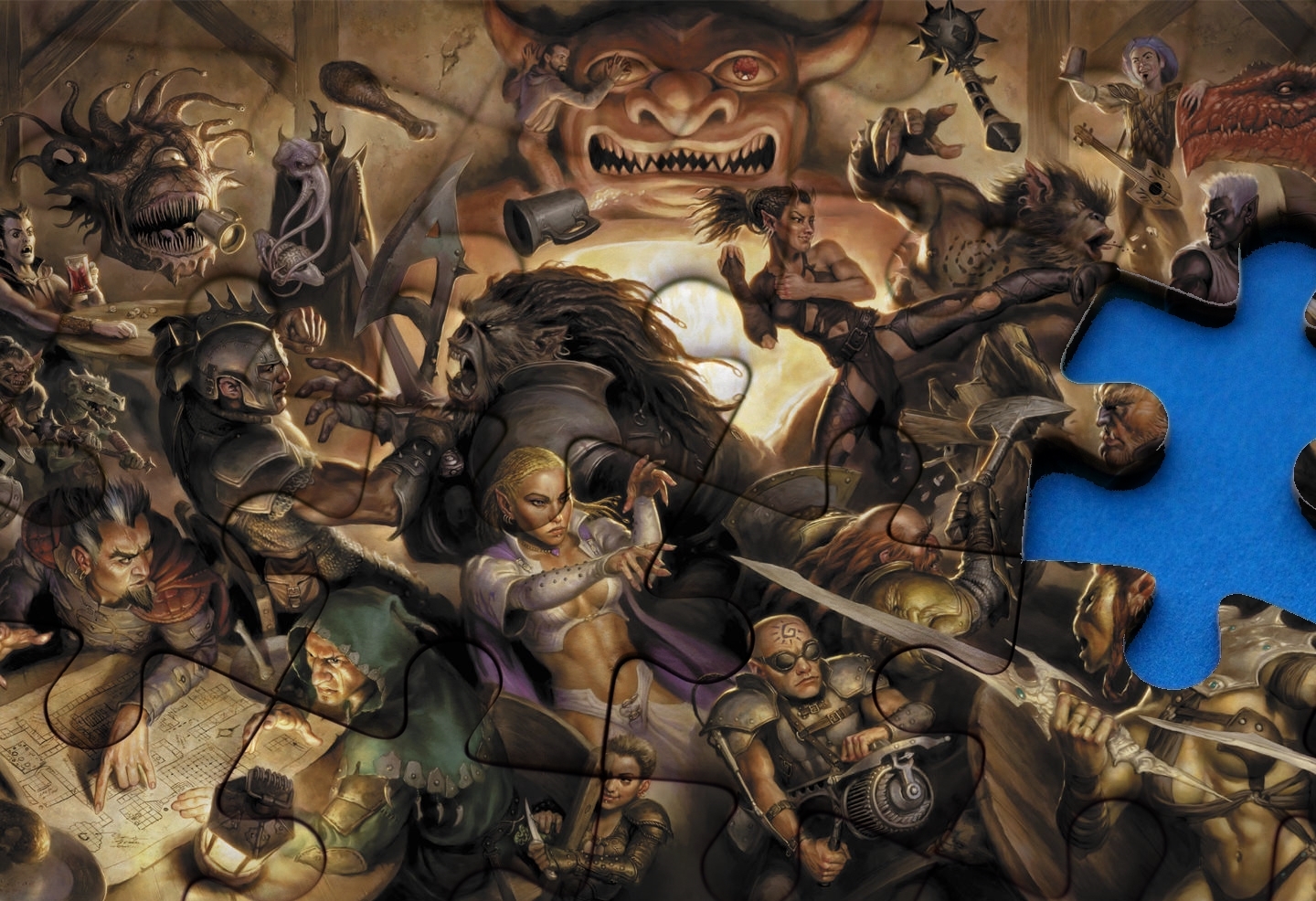
How Puzzles Transform Dungeons & Dragons Campaigns
August 14th, 2024
00:00

00:00
Summary
- Puzzles offer a break from combat in D&D campaigns
- Enhance player experience and narrative depth
- Elemental Switch and Musical Locks encourage teamwork and strategic thinking
Sources
In the intricate world of Dungeons and Dragons, puzzles serve as a captivating diversion from the traditional combat scenarios, offering both Dungeon Masters and players a unique opportunity to engage in intellectual challenges that enhance the narrative depth of their campaigns. These puzzles not only provide a refreshing change of pace but also enrich the player experience by incorporating elements that require critical thinking, problem-solving, and teamwork. The art of puzzle design in Dungeons and Dragons is multifaceted, involving creativity and a deep understanding of the players abilities and the campaigns thematic elements. Whether its rearranging elemental pedestals based on clues depicted in ancient murals or deciphering musical notes to unlock doors, each puzzle is intricately designed to seamlessly integrate into the storyline, adding both complexity and excitement to the gameplay. For instance, consider the Elemental Switch puzzle, where players encounter pedestals representing different elements such as fire, water, earth, and air. The challenge lies in correctly arranging these pedestals to unlock a sealed door, with environmental hints like scorch marks or water stains providing subtle guidance. This type of puzzle not only tests the players deductive skills but also their ability to interpret and interact with the game world around them. Similarly, the Musical Locks puzzle involves a series of locked doors, each requiring a specific melody played on a lyre to open. This puzzle emphasizes the importance of musical knowledge or the ability to solve riddles related to sound, offering a distinctly different challenge from the usual tactical combat encounters. The inclusion of puzzles like these in a Dungeons and Dragons campaign encourages players to think creatively and collaborate more effectively, often leading to memorable moments of triumph and revelation that strengthen the bond between players and enrich the overall storytelling experience. Moreover, puzzles can be tailored to the specific interests and strengths of the players, making the game more inclusive and engaging for everyone involved. As Dungeon Masters incorporate these intellectual challenges into their campaigns, they must balance difficulty to ensure that the puzzles are neither too easy nor excessively daunting. Flexibility in puzzle design is crucial, as it allows for the accommodation of creative solutions proposed by players, thereby fostering an atmosphere of innovation and spontaneous problem-solving. In summary, the use of puzzles in Dungeons and Dragons campaigns introduces a dynamic and interactive element that complements traditional combat mechanics, offering players a well-rounded and immersive experience. These puzzles not only challenge the intellect but also enhance narrative depth, making each campaign uniquely engaging and enjoyable. Continuing from the foundational ideas of puzzle integration in Dungeons and Dragons campaigns, lets delve deeper into the specific puzzles that can be incorporated to elevate gameplay. Each of these puzzles not only challenges players but also enhances their cooperative capabilities and strategic thinking. Starting with the Elemental Switch, this puzzle engages players with a scenario where they encounter four elemental pedestals to fire, water, earth, and air to arranged incorrectly around a sealed door. The key to solving this puzzle lies in correctly rearranging the pedestals to reflect the natural order of elements as depicted in nearby murals. For example, placing the earth pedestal at the base, followed by fire, water above the fire, and air at the top. To aid players, environmental cues such as scorch marks near the fire mural or dampness near the water pedestal provide subtle hints, making the puzzle both engaging and educational as players learn to observe and deduce from their surroundings. Next, the Musical Locks puzzle provides a melodious challenge where players encounter multiple locked doors, each marked with a different musical note. At the center of this puzzle is a lyre placed on a pedestal. The objective is to play specific tunes that correspond with the musical notes above each door. The clues to these tunes can be discovered through inscriptions or objects scattered around the room, or through riddles that describe the required melody or rhythm. This puzzle not only tests players musical knowledge and interpretive skills but also encourages them to engage with the game world in a uniquely interactive way. Moreover, the design of these puzzles allows for a high degree of adaptability. Dungeon Masters can modify the complexity of the puzzles based on the players experience levels and the thematic elements of the campaign. For instance, additional layers can be added to the Elemental Switch by including decoy pedestals that emit similar environmental effects, thereby increasing the puzzles difficulty. Similarly, the Musical Locks can be scaled in complexity by increasing the number of doors or by incorporating harmonies that require simultaneous play. These innovative puzzle ideas, when skillfully woven into the fabric of a Dungeons and Dragons campaign, do more than just provide a break from combat. They enrich the narrative, deepen the world-building, and foster an environment where strategic thinking, teamwork, and creativity are not just rewarded but required. By challenging the intellect and collaborative skills of players, these puzzles enhance the overall dynamism of the game, making each session unpredictable and thrilling. In conclusion, integrating puzzles such as the Elemental Switch and the Musical Locks into Dungeons and Dragons campaigns offers a multifaceted gaming experience that goes beyond traditional combat scenarios. These puzzles not only challenge the players but also provide them with opportunities to develop critical thinking and team coordination. As such, they are an essential tool in the Dungeon Masters arsenal, bringing depth, excitement, and a touch of intellectual intrigue to every adventure.